Bogotá is the capital of Colombia and the first tourist destination in this Latin American country. The city is located at an altitude of 2,600 meters, in the highlands of the savannah of Bogota and from which you can see the snowy peaks of the Cordillera Central; it offers its visitors beautiful natural parks, much history and culture, museums and one of the best experiences in rumbas and nightlife in the country. In this tourist map we draw the Bogotá that is the economic engine of Colombia and a metropolis that has existed for 500 years and in which currently live about eight million people.
Tourist Map of Bogota
Whoever wants to know the best of Colombia, should certainly visit the tourist city of Bogota. The economic engine of the South American country is also an important cultural center in the region, a kind of culinary and entertainment paradise where historical tours, museums, natural landscapes and nightlife make up the scheme of a dream trip. Bogotá is the administrative, industrial, sports, tourism, political and economic center of Colombia. An autonomous district that was founded in 1538 by the Spanish conqueror Gonzalo Jiménez de Quesada, who arrived there after a hard journey through the Andean area. Its location and geographical attributes also gave it the title of the third highest city in South America. The Colombian capital is a metropolis in constant financial growth and this is one of its main strengths, as it is home to a large number of industries and offers the potential to create businesses and encourage entrepreneurship.

The tourist attractions of Bogota begin with an impeccable colonial center that tells the story since the arrival of the Spanish conquerors through its architecture and customs. It also offers a great cultural offer with the number of theaters and museums available to locals and visitors, in addition to being a city where study and research is encouraged, since it has 114 universities. Due to its height and location, it has two main seasons, one of rain and the other of drought. It has a mountainous climate whose temperature ranges from seven to nineteen degrees, but the annual average is thirteen degrees centigrade. Tourists can access the city through its airport, El Dorado International Airport, which is the second in Latin America to transport people. The city can be visited by public transportation, being the Transmilenio one of the main public transportation systems in the city, which does not have a subway system. It is important to note that it is also very common to travel by bicycle.
Tourist Guide of Bogotá
Bogota is one of the fifty favorite cities for tourists arriving in the Americas. One of its main attractions lies in its cuisine, a fusion of Andean, Spanish and African flavors. For this, in the metropolis there are many restaurants that cover all budgets, both simple and luxury in which you can taste the best dishes such as ajiaco santafereño or a corn soup with meat and peas which is called mazamorra chiquita. You can also taste the pandeyucas, pandebono that consist of the typical bakery of the region. But, it’s not only about food, in Bogota there are incredible natural landscapes, green areas and a great system of parks integrated by pedestrian corridors, which in total add up to about a thousand spaces of this type of entertainment, in addition to the mountains and access to rivers and mechanical parks that are very famous in the continent.
What to visit in Bogotá
La Candelaria
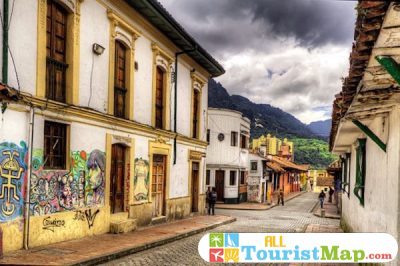
La Candelaria is the historical, administrative and cultural center of Bogotá. This area stands out for two fundamental aspects, the first is the cultural heritage through the architecture and conservation of colonial spaces. Visitors can see cobblestone streets and well-preserved houses with tile roofs, carved gates and large windows with grilles. In the center of La Candelaria is the Plaza Bolívar and around this space are important religious buildings such as the Capilla del Sagrario and the Cathedral Primada de Colombia. The other aspect is the institutional and political one, since in this area there is the presidential residence, known as La Casa de Nariño, the Supreme Court of Justice and the Congress of the Republic, among other important institutions.
Monserrate
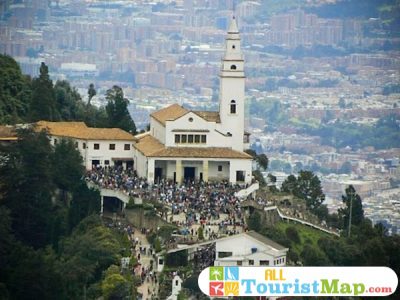
Monserrate is one of the most representative hills of Bogotá. From there you can access the viewpoint and appreciate one of the best panoramic views of the city. There is also a religious temple, the Basilica of the Fallen Lord of Monserrate, a place of worship and pilgrimage for the locals. On this hill there is a variety of restaurants, which cater to all budgets, as well as a replica of a 19th century city street, called Calle del Candelero. The route to the top of Monserrate is one of the most famous walks in the city. It can be done either on foot or in elevated chairs, as well as the climb to the top, which can be reached by cable car or funicular, since the stations are on the lower part of the hill.
Usaquén

Usaquén is a small town in the northwest of Bogotá founded in 1539, whose history is marked by love, tragedy and the Spanish conquest. Its name comes from the native Usacá, daughter of Tisquesusa, who was forced to marry the Spanish captain Juan María Cortés by order of the conqueror Domingo de las Casas. After the foundation of the town, it was abandoned two hundred years later by order of the Spaniards. In 1860 it was the scene of the Battle of Usaquen. Today it is an area of colonial architecture, which is not very extensive but well preserved, with an abundance of bars, shops and restaurants. The walk through this area denotes a beautiful amalgamation between the old and the modern.
Simon Bolivar Metropolitan Park

The Simon Bolivar Metropolitan Park is the vegetable lung of Bogota. It is in the center of the city, near the National University of Colombia and consists of a series of parks and green areas. It began to be built in 1966 and gradually was growing, in the 1980s was included a religious temple. This park offers an infrastructure in which there are bicycle paths and exclusive areas for pedestrians. It is an area where many cultural events, concerts and fairs are held throughout the year, also has the Plaza de Eventos, a place that can accommodate 140 thousand people.
Botero Museum
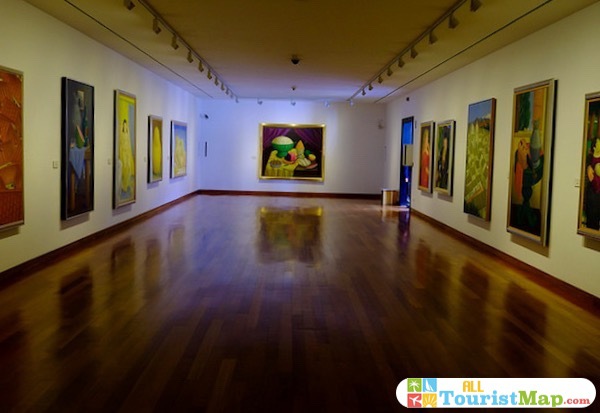
The Botero Museum is considered one of the best art museums in Latin America. It is located in the colonial zone of La Candelaria. In addition to the works of Fernando Botero, a renowned artist in the country, who has worked as a painter, muralist and sculptor in a unique style that has transcended borders to achieve worldwide fame, there is also a display of the most representative of Colombian art, such as the exhibition of works by artists from the world’s leading movements such as Pablo Picasso, Monet, Edgar Degas, Salvador Dali, Miro, Monet and Renoir, which represent the most significant art in recent centuries. The museum’s art collection is part of the donation made by Fernando Botero in 2008, in which he bequeathed 208 pieces, both his own and those of renowned artists.
Gold Museum
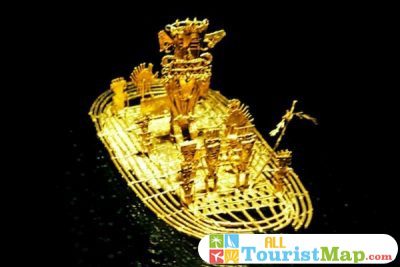
The Gold Museum of Bogotá is one of the most important in the world in this area. It shows 34 thousand pieces of jewelry from the period before the arrival of Christopher Columbus as well as twenty thousand objects, including ceramics, precious stones, textiles that tell the history of the peoples of the region. The exhibition is displayed in different rooms according to the function of the objects. It began to operate in the 1930s and since then it has received visitors from all over the world, interested in exploring part of the history of the aboriginal peoples. In particular, objects belonging to the Tumaco, Tayrona, Malagana and Tolima ethnic groups, who lived in the area for thousands of years, are displayed.
Zipaquirá
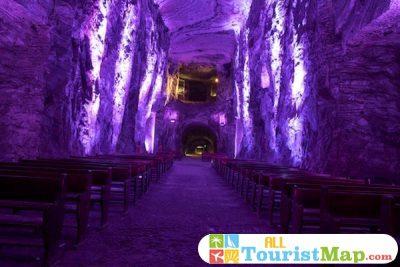
The Zipaquira is one of the largest salt mines in the world, located one hour from Bogota, for this reason Zipaquira is known as the “city of salt”. In this kind of small town on the outskirts of the city, the Salt Cathedral was built, which more than a religious temple works as a museum and architectural example. Inside this enclosure, there are samples of sculptures made with salt, as well as enclosures devoted to the exhibition of mining objects and natural resources. It is an interesting place to learn about geology and natural history. You can also visit the old Gonzales Forero square which, in its beginnings, was also known as the main square of the Comuneros.
District Planetarium
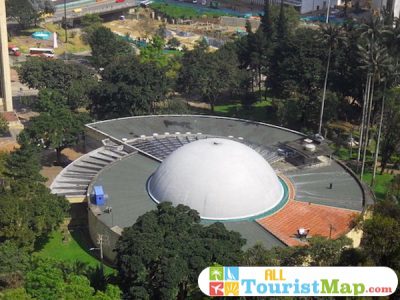
The District Planetarium, located on Calle 26B in Colombia, is ideal for those who travel as a family and are looking for an ideal place for children that is both educational and fun. The users can see the stars in the Dome, know and marvel with everything related to the planet and the cosmos, during a very illustrative tour with audiovisual and interactive experiences. It is also possible to increase knowledge about the physics of the earth such as gravity and the magnetic field and other topics of the universe such as its origin, the galaxies, etc. At the site, tourists and visitors can take the tour individually, but also through guided tours and expeditions that are organized on site.
Olaya Herrera National Park
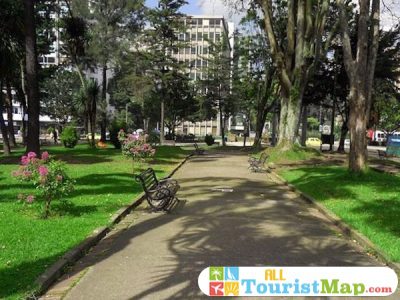
At 3,154 meters high is the Olaya Herrera National Park, 283 hectares where you can find more than nature in the middle of Bogota. In the western part you can enjoy playgrounds, theater, soccer field and other sports such as volleyball, basketball, tennis and hockey. In the eastern part you can appreciate the flora and fauna, forests, water sources, as well as beautiful and wooded green areas. The experience in this place is multiple, because besides enjoying beautiful landscapes and the view of the wonderful aviary, you can access cultural and sports activities for everyone, from children to adults, which include conventional sports such as volleyball, basketball and soccer, as well as hockey and skating.
Celestino Mutis Botanical Garden
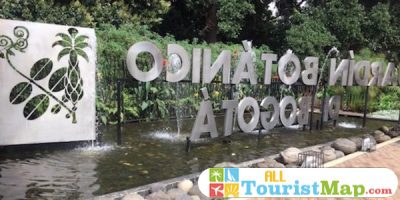
Created in 1955 in honor of the botanist José Celestino Mutis, who studied the flora in the viceroyalty of New Granada. In this botanical garden, which consists of twenty hectares of land, there are about 18,200 species of live plants, most of which are representative of the Andean area. But in this place you can not only appreciate the biodiversity in terms of flora, but you can also enjoy natural landscapes such as lakes, forests and natural representations of the Amazon rainforest, moorland, plains and swamps.
Bogotá Hotel Map
Due to some deficiencies in the city of Bogotá in terms of public safety, visitors should be especially careful when choosing the site or neighborhood to stay in during their stay in the city. The northern area of the metropolis is one of the most recommended for safe accommodation, one of the best options is the colonial neighborhood of Usaquén, which in addition to hotels and lodgings, has a good number and variety of restaurants, bars and night spots. La Candelaria, which is also a colonial area, is another good option, especially because it has very good quality hotels and the access to tourist attractions is more expeditious. In this area, where there is also an important sample of restaurants and night spots, accommodation is cheaper than in other areas. The cost of a room in a four-star hotel can range from 30 to 35 euros, approximately. If people are looking for economy, one option is shared rooms, which average cost ten euros per bed, per night. In the city there is also the option of renting tourist apartments.
